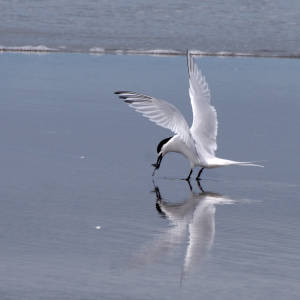Big and hairy but not so scary Tunnel web spider
Black tunnelweb spider
Porrhothele antipodiana
What do they look like?
Large spiders with dark abdomens and legs. The cephalothorax (the fused head and thorax) is leathery looking and typically red-brown in colour although darker examples are known. The spinnerets (appendages to spin silk) are quite obvious and look like two feelers that extend beyond the end of the abdomen.
Where are they found?
Common in bush and gardens alike, this species is found throughout much of New Zealand. It has also been introduced into the Chathams.
What are their habits?
These spiders are often found under logs and rocks. They build a silken tunnel with a broad area at the entrance that alerts the spider to the presence of potential prey. Typical prey includes beetles and other ground-living insects. There are also accounts of these spiders capturing snails and mice.
In the spring and summer, male tunnelwebs cause alarm when they stray indoors, seeking out females for mating. These spiders dry out and die rather easily, and so they may seek out a source of moisture when trapped inside. Often all that?s found in bathrooms and laundries are their shrivelled corpses.
After journeying through hostile environments, and risking attack by predators, the male tunnelweb has one last great obstacle to overcome - the female tunnelweb.
On the face of it, the male's chances don?t look good. The female is usually larger and stronger, and the male must enter her web in order to get close enough to mate. The female may even lunge at a courting male, yet if he manages to clasp her in his front legs, she will quickly become docile. Thus the male is able to mate and get away safely. Sometimes the male is not successful in his approach and is eaten by the female.
However, the risk of predation by a prospective mate is not borne by the male alone. Scientists from Canterbury University report that occasionally, once the female has become passive in response to the male's advances, the male will kill and eat the female instead of mating with her.
While males do not live long past maturity, females may live more than six years.
Tunnelwebs are attacked by spider-hunting wasps of the family Pompilidae. These wasps are capable of paralysing and dragging away tunnelwebs many times their own size. Once the helpless spider has been brought to the wasp's lair, the wasp lays an egg on it. Eventually, a grub will emerge to feed on the paralysed but still living spider.
What is their bite like?
These spiders are capable of delivering a painful bite because they have very large fangs. However, the symptoms of the bite are quite mild and are described as similar to a normal reaction to a bee sting. The bite should be cleaned and watched for signs of infection.
(thanks to Te Papa Museum website for this information)
- 0
- 0
- Pentax K-x
- 1/14
- f/8.0
- 55mm
- 800

Comments
Sign in or get an account to comment.


